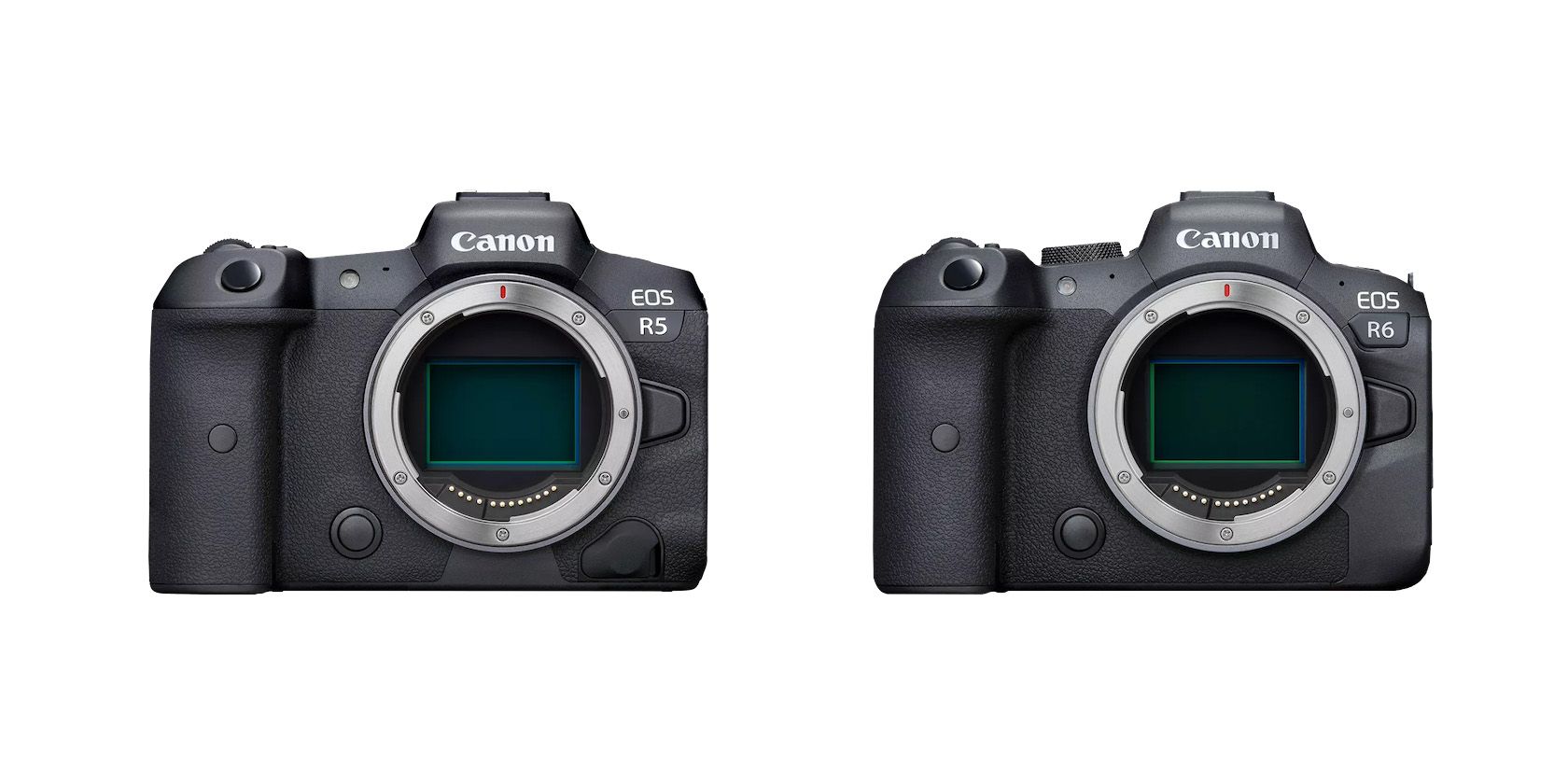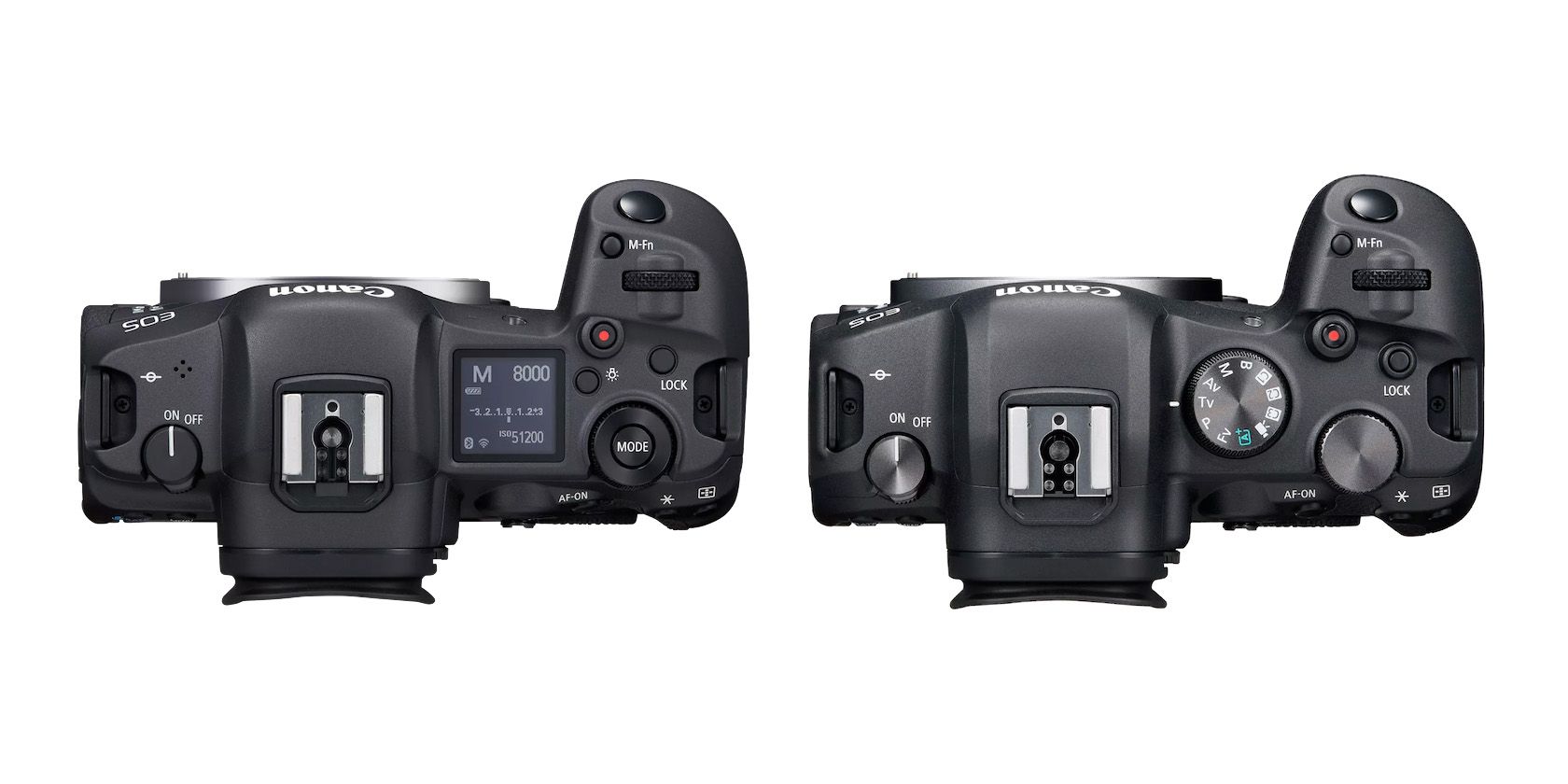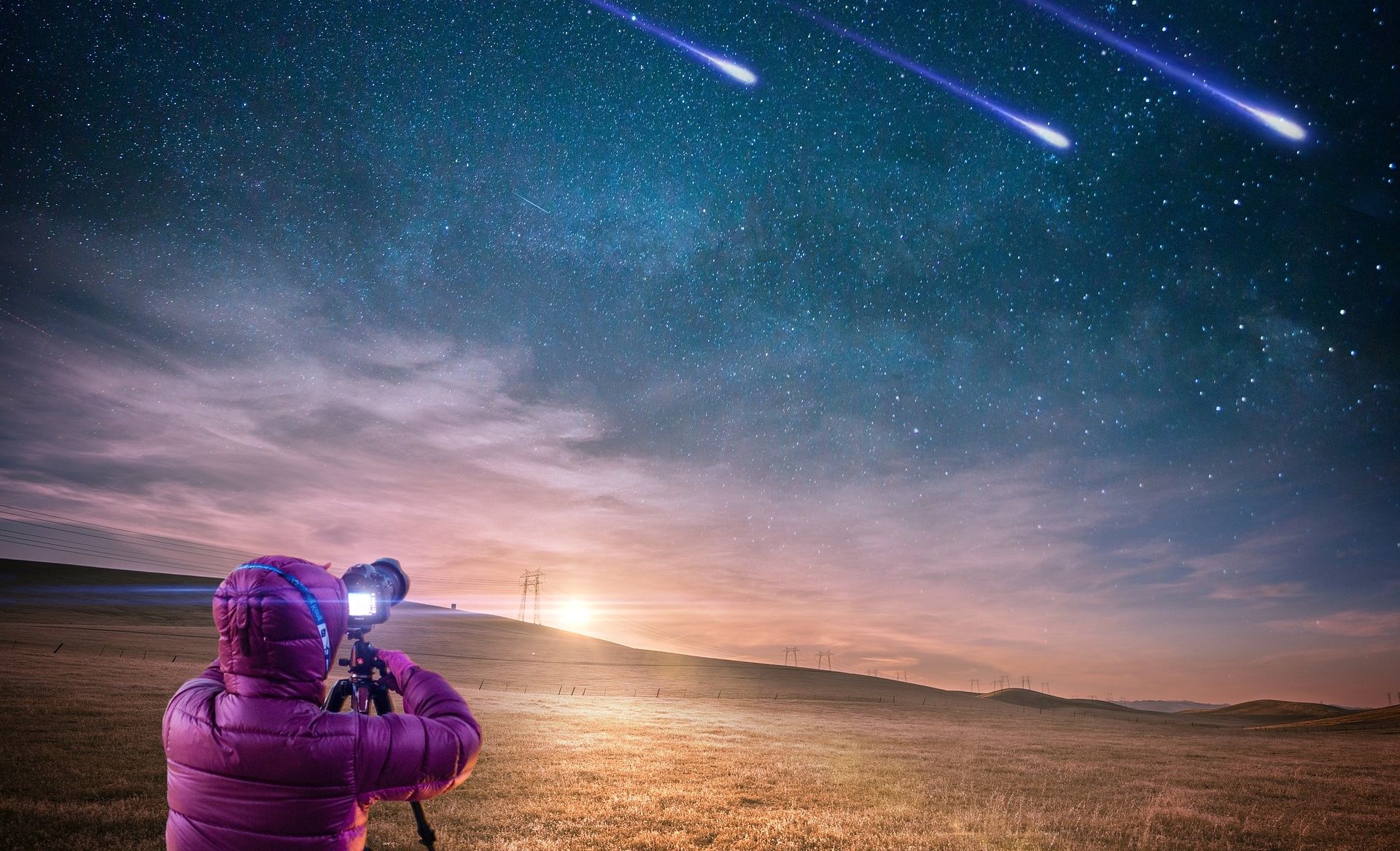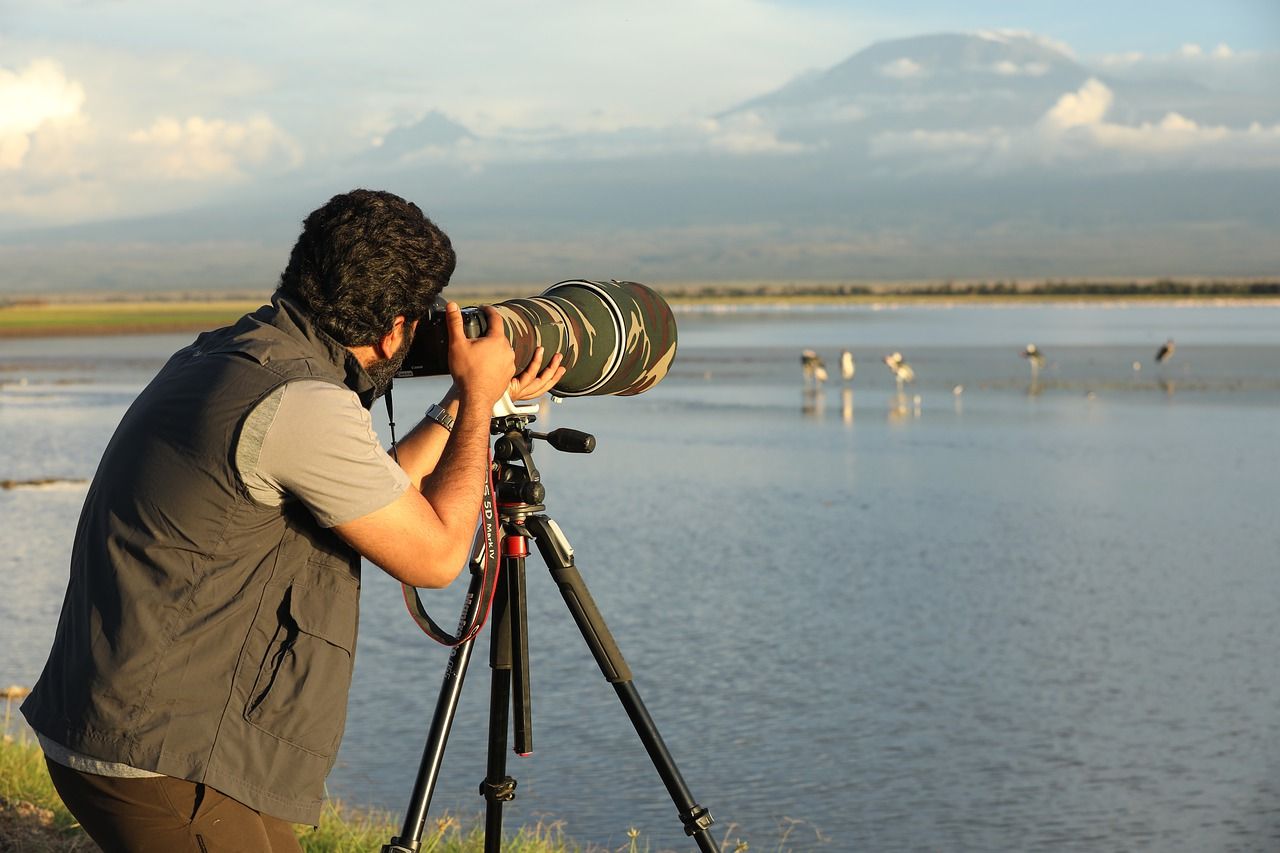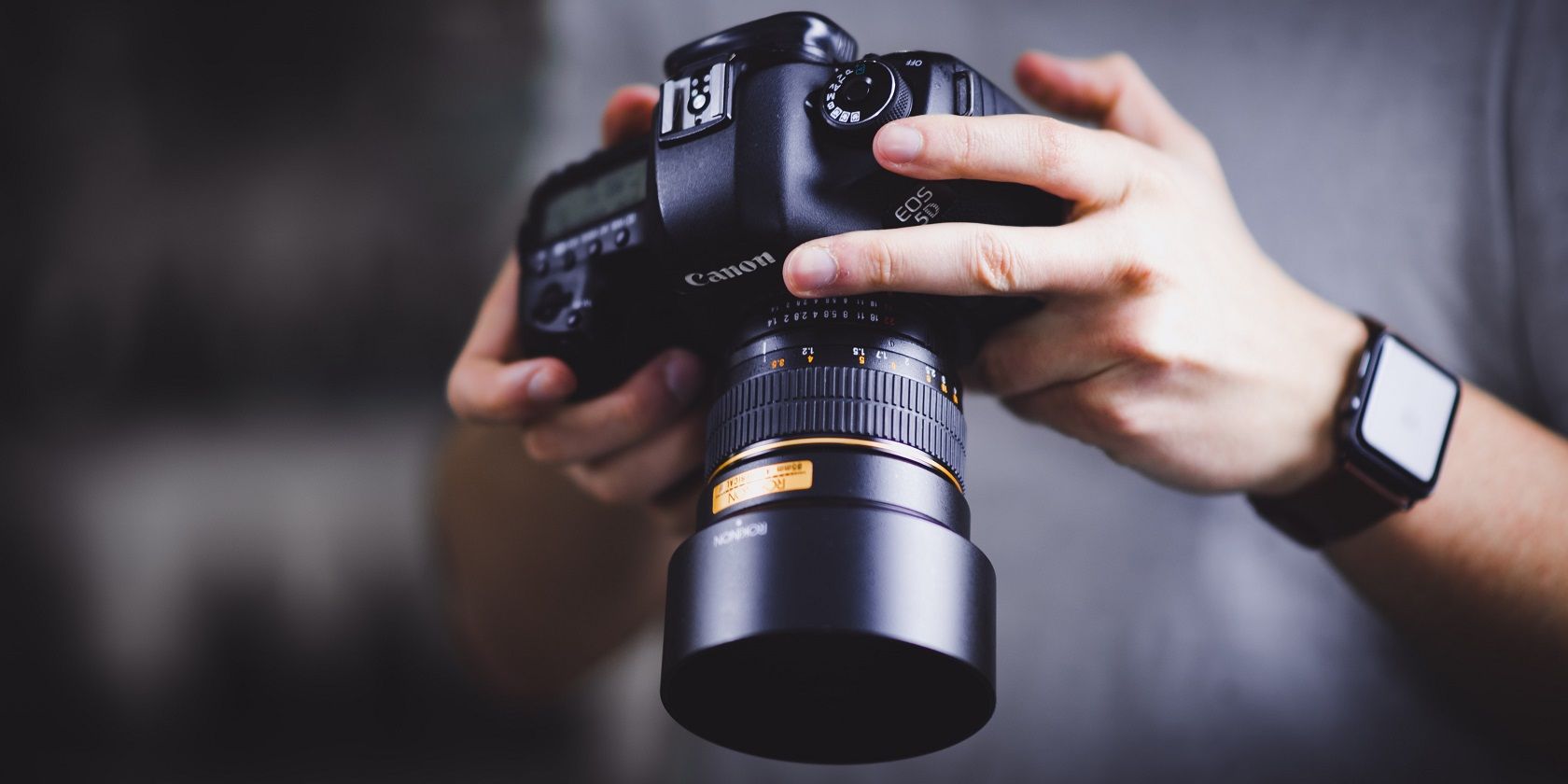Many photographers are happily parting ways with their DSLRs thanks to the remarkable autofocusing capabilities and compact size of the mirrorless camera. Canon's R5 and R6 are two such great cameras that have become popular with both enthusiasts and professional photographers.
Are you eyeing to buy one of them but confused about which one to choose? Fret not—we're here to help you decide.
Canon R5 vs. R6: The Basic Specs
The Canon R5 and R6 are full-frame mirrorless cameras released on the same day in July 2020. Although they both are capable machines for any photographer, they have significant differences in their specifications and share a price difference of over 1500 dollars.
Canon R5 features a 45 MP full-frame CMOS sensor and DIGIC X image processor. The R6, on the other hand, has a 20 MP full-frame sensor with the same image processor. Both cameras come with two slots for memory cards. The R5 has one standard slot and one for a CFexpress card, while the R6 can take only traditional memory cards.
Mirrorless cameras are not like DSLRs when it comes to battery life, so you have to pay special attention to them. The R5 can take 320 shots, and the R6 can go up to 360 photos.
Let's look at the specifications in detail.
|
Canon R5 |
Canon R6 |
|
|
Sensor |
45.0 MP CMOS |
20.1 MP CMOS |
|
Sensor Size |
36 x 24 mm |
36 x 24 mm |
|
Low-Pass Filter |
Yes |
Yes |
|
Image Size |
8192 x 5464 |
5472 x 3648 |
|
Image Processor |
DIGIC X |
DIGIC X |
|
In-built Image Stabilization |
Yes |
Yes |
|
Viewfinder |
EVF, OLED |
EVF, OLED |
|
Viewfinder Resolution |
5.76 million dots |
3.69 million dots |
|
Storage |
1 UHS II SD, 1 CFexpress |
2 UHS II SD |
|
Continuous Shooting Speed |
12 FPS Mechanical Shutter; 20 FPS Electronic Shutter |
12 FPS Mechanical Shutter; 20 FPS Electronic Shutter |
|
Video Resolution |
8K DCI 30p, 4K DCI 120p |
4K UHD 60p, 1080p 120p |
|
Battery Life |
320 Shots |
360 Shots |
|
Base ISO |
100 |
100 |
|
ISO Sensitivity |
100 – 51,200 |
100 – 102400 |
|
Focus Points |
1053 |
1053 |
|
Max. Shutter Speed |
1/8000 |
1/8000 |
|
Flash Sync Speed |
1/200 |
1/200 |
|
Weight |
650g |
598g |
|
Dimensions |
138 x 97.5 x 88.0mm |
138 x 97.5 x 88.4mm |
|
Price |
$3,699 |
$2,099 |
The Canon R5 and R6 Are Both Lightweight With Great Ergonomics
The R5 and R6 share similar build and dimensions. With the R5 weighing 650 grams and R6 at 598 grams, there is only a slight weight difference between the two. The rear LCD screen on the R5 is slightly bigger at 3.2 inches, while the R6 has a 3-inch screen.
The main difference you will notice is that the R6 doesn't have a top LCD screen for quick review. Also, the electronic viewfinders on the cameras have some variations. The R5's EVF has a better resolution at 5.70 million dots compared to the 3.69 million dots of the R6.
If you're an intermediate or advanced photographer used to the top LCD screen, you may prefer the R5. Also, the R5's bigger viewfinder with better resolution can be handy for low-light situations.
R5 vs. R6: Which Produces Better Images?
Although the R5's high-resolution sensor has an edge, there is much more to image quality than the megapixel count. For one, the lens you put on your camera has more say over the image quality than your camera. Plus, most of us don't need such high resolution for everyday use.
The native ISO of the R6 is higher, which is a thing to note if you're an astrophotographer. Also, according to DXOMark, the R5 has an improved dynamic range and color depth at lower ISOs. However, the R6 outperforms the R5 at 1SO 500 and above. The smaller resolution of the R6 makes it an excellent tool for taking amazing astrophotos. In astrophotography, you will stack hundreds of images to get the final image.
The R5 is suitable for you if you do professional photography in a studio setting. Unless your photography involves heavy cropping, you don't need the hassle of managing and editing the huge files of the R5.
You must have a heavy-duty computer to handle the files and get some external hard disks to back them up. You may also need a particular card reader to read the CFexpress memory card in the R5.
R6: Impressive Features for Action, Sport, and Wildlife Photography
When it comes to capturing action photos, both R5 and R6 have similar features. They both share 1053 focus points to track the subjects and can shoot at 12 frames per second. If you choose the electronic shutter, it goes to 20 frames per second.
The R6 has a slight edge over R5—thanks to its higher buffer capacity, which lets you shoot in continuous mode without delay. You can take up to 240 RAW images before filling your buffer. The R5 can handle only up to 180 images. The files are also significantly smaller in the R6 due to their smaller resolution, so the buffer will not fill up as quickly. With the R6, you will never miss a shot and can take your wildlife photos to the next level.
It also has a higher native ISO, an advantage for wildlife shooters. You have to use a higher shutter speed to capture the action with a long lens. So using a high ISO is inevitable, and the R6 is a camera that can deliver clean images at a high ISO. It also has a better battery life than the R5.
But don't discount the R5 yet. The higher-resolution images from the R5 can give you more flexibility if you want to crop your wildlife pictures. Also, remember the R5 has a slot for the speedy CFexpress card, which can handle larger files.
R5: The Clear Winner for Videography
Shooting video is one area where the R5 stands out distinctively. The R5 can shoot 8K DCI at 30 fps and 4K DCI at 120 fps. But the R6 can only shoot 4K UHD at 60 fps. There is no DCI option in the R6. The Canon R5 uses full resolution to oversample video for 4K resolution, but the R6 uses a 1.07 times crop to take 4K videos.
The video quality difference can be the deciding factor if you do video work. You can just throw your R5 in your camera bag and shoot pictures or videos anywhere. You don't have to carry two different cameras for photos and videos.
With a CFexpress card in the R5, you can comfortably shoot in 8K. Your regular memory card won't cut it. Also, the articulating LCD screen is excellent for shooting from different angles and perspectives. The bigger LCD screen and improved EVF also add more points to the R5.
The Right Camera Depends on Your Needs
The Canon R5 and R6 are both exceptional cameras with all the right technology you need to take amazing pictures. You can buy either one of the cameras and be satisfied with it. But think carefully before investing your money.
The specs of the R5 are great on paper, but do you need all the extra resolution and video capabilities? Do you have the capacity to manage the heavy files? If the answer is no, save money and go for the lighter R6. On the other hand, are you an intermediate photographer who takes videos or planning to grow your photography into a business? Then, go ahead and splurge on the R5.

